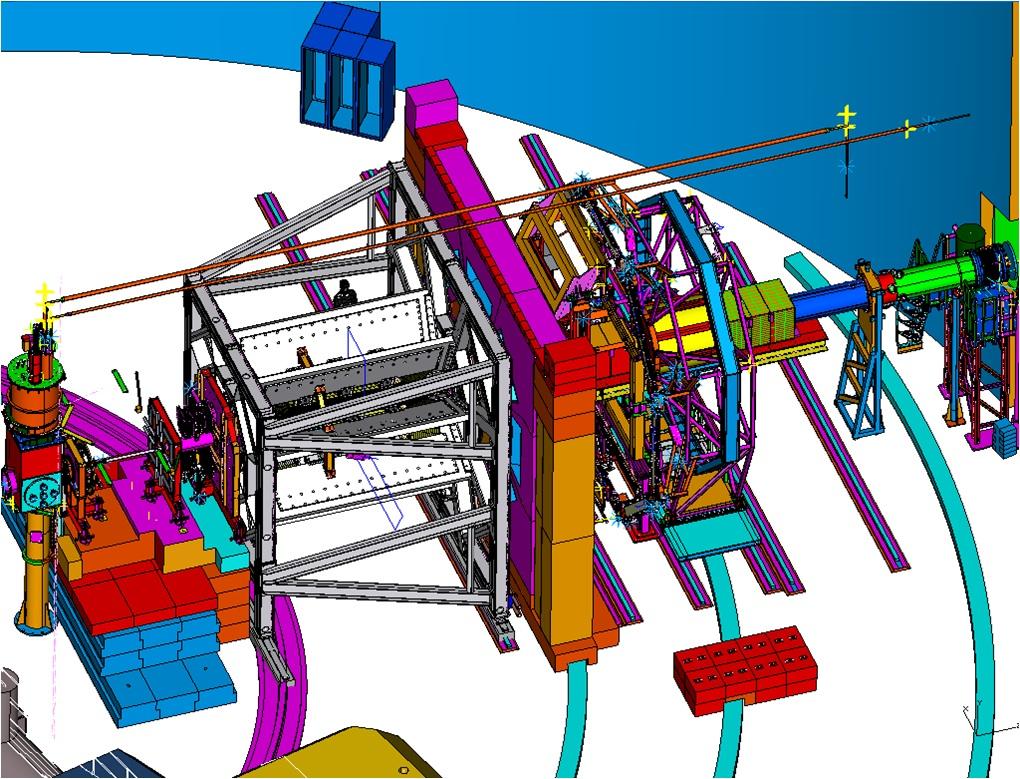
After more than ten years of planning and construction, the Qweak experiment at Jefferson lab is now taking data. The experiment will make a very precise measurement of the proton's ‘weak charge’, which has a well-defined value in the current standard model of physics. Any departure from this prediction could be a sign of very exciting and important new physics. Jefferson lab (JLab) has set a cutoff date of May 2012 for the completion of the experiment, so the pressure is on to achieve a significant result by then. Some physics such as Supersymmetry (SUSY) or an extra Z boson (Z'), which could be discovered by the Large Hadron Collider at CERN, would also show up in Qweak. The prospect of being the first to discover such new physics is an additional incentive to achieve an early result.
The Qweak experiment scatters electrons from the protons in a liquid hydrogen target. The target is the highest power liquid hydrogen target ever built, handling up to 2500 watts of heat load. When an electron and a proton approach each other, the interaction is dominated by the electric charge, the same charge familiar to us as ‘static electricity’ on our clothes and hair. There is, however, also a ‘weak charge’, many millions of times weaker. This is the charge that the Qweak experiment must measure. To isolate the effects of the weak force, the experiment uses the fact that the weak force in a given interaction is not identical to the weak force in a mirror image of the same interaction -- the force is said to violate mirror symmetry or ‘parity’. The experimenters compare the number of electrons that scatter under a right-handed spin to the number that scatter from a left-handed spin. The numbers will not be equal because of the parity-violating nature of the weak force. The experiment is designed to measure the difference to a precision of 6 parts per billion (ppb). It is important to reach this precision because future physics that will be found will only change the number by a few tens of parts per billion from the Standard Model prediction.
An NSERC-funded spectrometer magnet detects the scattered electrons. TRIUMF engineers and scientists oversaw the magnet project, and the Canadian teams used a field mapping apparatus designed and built by TRIUMF to carry out the magnetic field mapping. The main data acquisition for the experiment also uses TRIUMF custom designed and built electronics (custom preamplifiers and digital signal integrators).
The Canadian contingent, which includes researchers from TRIUMF, The University of Manitoba, The University of Northern British Columbia, and The University of Winnipeg, is the largest external group in the collaboration. In addition to the major contributions Canadians to the spectrometer, Canadians also contributed heavily to the main quartz Cerenkov detectors, a diagnostic scanning detector, and position-sensitive diamond strip detectors. The diamond strip detectors use TRIUMF preamplifier-discriminator modules.
The experiment is running in Hall C at JLab until May 2012.
By Des Ramsay, TRIUMF research scientist emeritus, who is part of the Qweak Project
